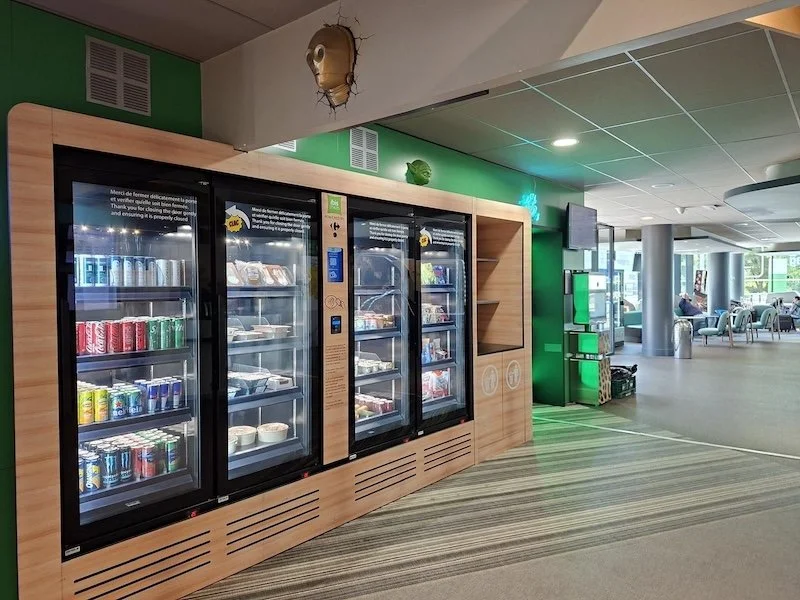Enhancing patient experience with virtual medical receptionists
In today's healthcare environment, patient experience is becoming increasingly important. Healthcare professionals are always looking for methods to enhance patient interactions and ensure that their needs are met efficiently and effectively.
One creative remedy that has become popular recently is the implementation of virtual medical receptionists. These virtual representatives bridge patients and healthcare providers, facilitating communication and optimising patient journeys.
Improving accessibility and convenience
Among the main benefits of virtual medical receptionists is the enhanced accessibility they provide. Patients can reach out to healthcare facilities conveniently without being restricted by traditional office hours.
Virtual receptionists operate 24/7, allowing for appointment scheduling, inquiries, and support outside regular business hours. This adaptability is especially helpful for people with demanding work schedules or mobility issues. It fosters a sense of independence, as patients can engage with their healthcare providers on their own terms.
Additionally, virtual receptionists can handle a high volume of calls simultaneously, reducing patient wait times. This immediate response can significantly alleviate frustrations often associated with lengthy hold times in traditional call systems, promoting a more positive patient experience.
Streamlining appointment management
Efficient appointment management is critical to patient satisfaction. Virtual medical receptionists can streamline this process by automating scheduling, confirmations, and reminders.
Patients receive real-time updates regarding their appointments, significantly reducing the likelihood of no-shows. Enhanced communication through text messages or emails can remind patients of upcoming visits, including what preparations might be needed for their appointments.
Moreover, virtual receptionists can handle rescheduling and cancellations more effectively. Patients who need to change their appointment can do so quickly and easily through a virtual interface, ensuring that their healthcare needs are met without unnecessary delays.
Personalising patient interactions
Virtual medical receptionists can be programmed to personalize patient interactions, addressing individuals by name and recalling previous interactions. This personalised touch can foster a sense of familiarity and trust between patients and their healthcare providers.
By accessing patient history and preferences, virtual receptionists can tailor recommendations or responses, enhancing the overall experience. For instance, if a patient regularly seeks appointments for a particular service, the virtual receptionist could proactively offer scheduling options when the patient calls, making the process seamless.
Enhancing communication
Effective communication is at the heart of patient satisfaction. Virtual medical receptionists can communicate clearly between patients, their families, and healthcare providers.
They can provide basic information about services, procedures, and office policies, ensuring patients are well-informed before their visits.
In addition, virtual receptionists can triage calls, directing patients to the appropriate department or personnel based on their needs. This ensures that patients feel heard and that their inquiries are handled by someone equipped to assist them.
Virtual receptionists improve communication pathways and provide a more satisfying patient experience.
Supporting administrative efficiency
Healthcare providers face numerous administrative tasks that can detract from patient-centered care. Introducing virtual medical receptionists can relieve some of this burden by handling routine inquiries, appointment scheduling, and patient follow-ups.
By automating these functions, healthcare staff can focus on more critical tasks that require a human touch, such as direct patient interaction and care. This shift improves operational efficiency and enhances the overall quality of patient care, as providers have more time to devote to individual patients.
Fostering a cost-effective solution
Implementing a virtual medical receptionist system can be a cost-effective solution for healthcare providers.
By reducing the need for physical office staff to manage incoming calls and patient inquiries, healthcare practices can cut down on overhead costs. This, in turn, can allow healthcare systems to redirect resources toward enhancing patient care and investing in advanced treatment options.
Moreover, the efficiency gained from using virtual receptionists can lead to increased patient throughput. With streamlined appointment management, practices can service more patients daily, positively impacting revenue generation without compromising the quality of care.
Addressing privacy and compliance
Maintaining patient privacy is paramount in the healthcare industry. Virtual medical receptionists are designed with compliance in mind. They can manage sensitive information securely, ensuring that patient data is handled by privacy regulations such as HIPAA.
By employing secure communication channels, virtual receptionists can assist patients with their inquiries while protecting their personal information. This commitment to privacy fosters trust and confidence among patients, enhancing their overall experience with the healthcare provider.
Adapting to patient needs
As healthcare dynamics evolve, the capacity of virtual medical receptionists to adapt to patient needs becomes crucial.
These systems can integrate patient feedback and analytics to improve services continuously. Virtual receptionists can adjust their responses and recommendations by analysing trends in patient inquiries or appointment patterns, ensuring they remain relevant and practical.
Additionally, this adaptability means that virtual receptionists can seamlessly manage varying patient volumes, easily accommodating peak times and ensuring no patient feels neglected during busy hours.
This responsiveness enhances operational efficiency and significantly contributes to overall patient satisfaction, as individuals feel acknowledged and valued throughout their healthcare journey.
Integration with existing systems
The seamless integration of virtual medical receptionists with existing healthcare systems amplifies their effectiveness.
These systems can be linked with Electronic Health Records (EHRs), allowing real-time access to patient information that enhances service delivery. Such integration can streamline tasks such as verifying insurance eligibility, updating patient records, and managing follow-up care instructions.
Furthermore, this establishes a cohesive workflow for healthcare providers, ensuring that all team members are aligned and informed about patient interactions.
By leveraging technology to bridge various components of healthcare delivery, virtual receptionists play a vital role in creating a more coordinated and efficient care experience for patients and providers alike.
Conclusion
In summary, DocVA virtual medical receptionists offer a valuable solution for enhancing patient experience in the healthcare sector.
By improving accessibility, streamlining appointment management, personalising interactions, and fostering effective communication, they serve as a pivotal tool for healthcare providers.
Additionally, their ability to support administrative efficiency while maintaining compliance with privacy regulations creates a pathway toward higher patient satisfaction.
As the healthcare landscape continues to evolve, the integration of virtual receptionists will likely become increasingly essential for providers aiming to meet the dynamic needs of their patients.
By embracing this technology, healthcare practices can create a more engaging, efficient, and pleasant experience for those they serve.






























Continue reading…